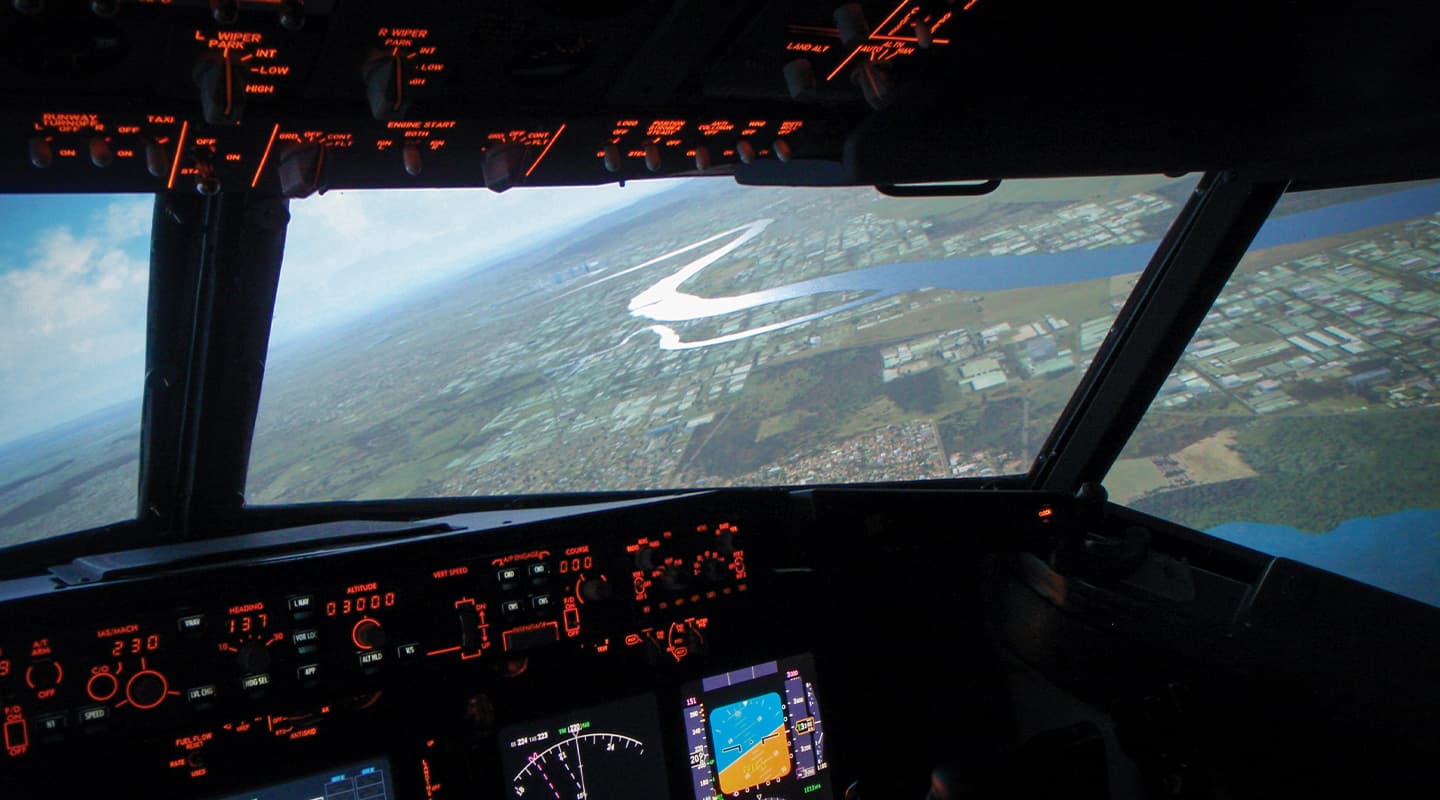
Something in the Air
…or not, as we investigate the latest in flight simulation.
Text:\ Tim Stackpool
Photos:\ Richard McMullen
A new installation in Queensland is set to send the flight simulator market into a flat spin with a new low-cost development for SimJET by Brisbane-based VR Solutions. This new philosophy of flight simulator allows trainee pilots to log hours on a platform using a new custom technology called VR Sync along with Microsoft’s Flight Simulator X application.
VR Solutions project developer Alisdair Paterson believes that the display system for the Boeing 767-300 simulation is quite unique. “What makes this different is the cylindrical screen, it’s not faceted,” he explained. “It’s a blended display system, not individual surfaces butted together. The overall resolution is fairly large as well at approximately 5300 x 1080 pixels. It also uses a PC cluster to run the graphics with 4 high end computers to deliver the 3 channels of graphics, one to each projector.”
The SimJET simulator uses Christie Digital HD high resolution projectors incorporating the Christie automatic calibration system known as AutoCal, together with VR Solutions’ VRSync software application. Each element was designed specifically to work with SimJET’s custom made high resolution one-metre satellite terrain data (i.e. shows details over one metre in size). VR Solutions managed the supply and installation of the Christie Digital HD projectors with AutoCal and custom developed the new VRSync software whilst working on the project.
Does the world need another flavour of industrial simulator? Apparently so. This particular flight simulator technology was developed after a gap was identified in the low cost, aircraft-specific training device market. This gap has arisen from a pilot shortage which has required airlines to progress pilots faster than might have been previously comfortable.
Airlines have consequently been forced to convert lesser experienced cockpit crew, with minimal flying hours or limited aircraft type experience, into pilots capable of flying modern commercial aircraft. Whilst carrying out this skill upgrade, inconsistencies were found in the level of competency of both First Officers and Captains.
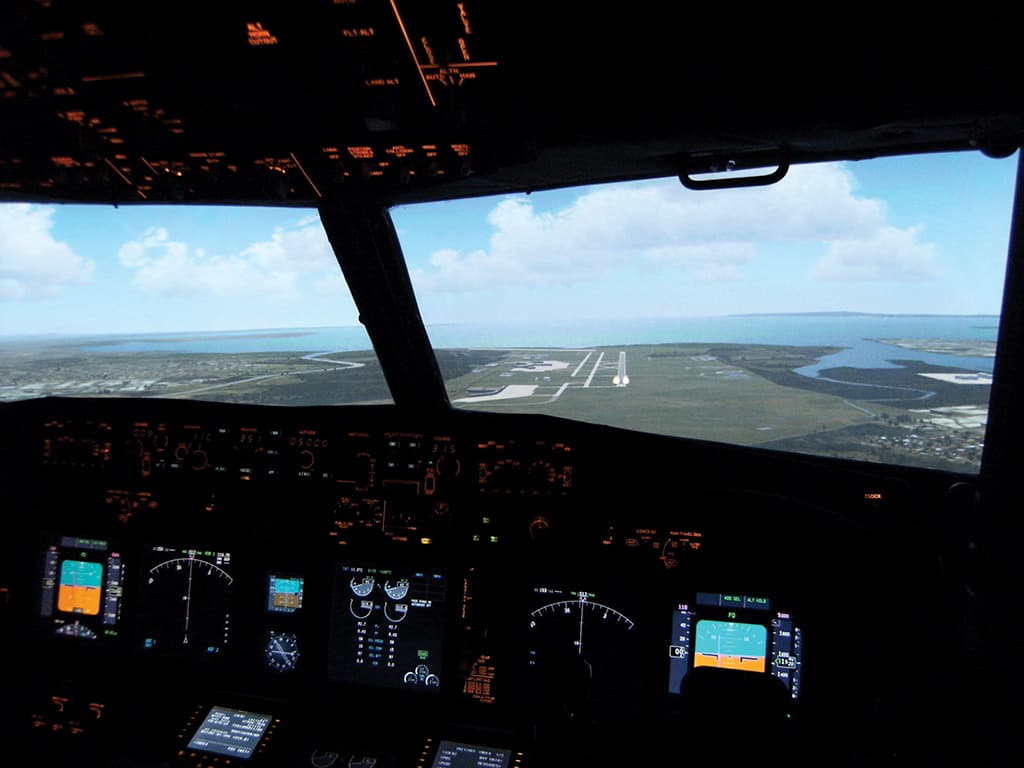
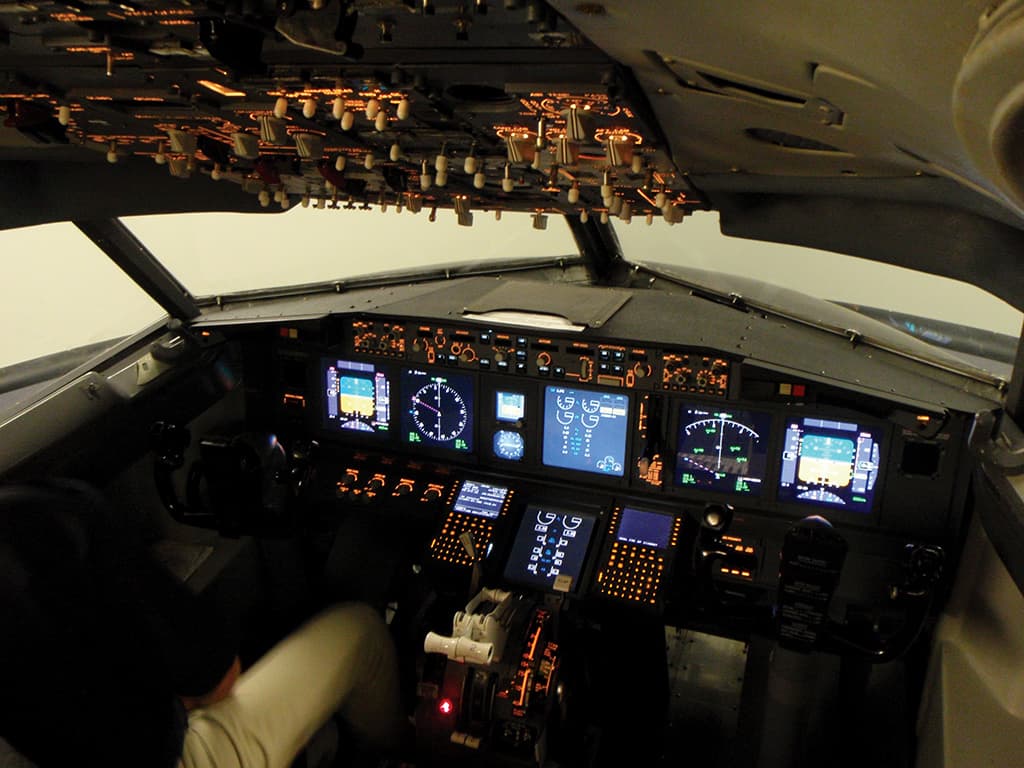
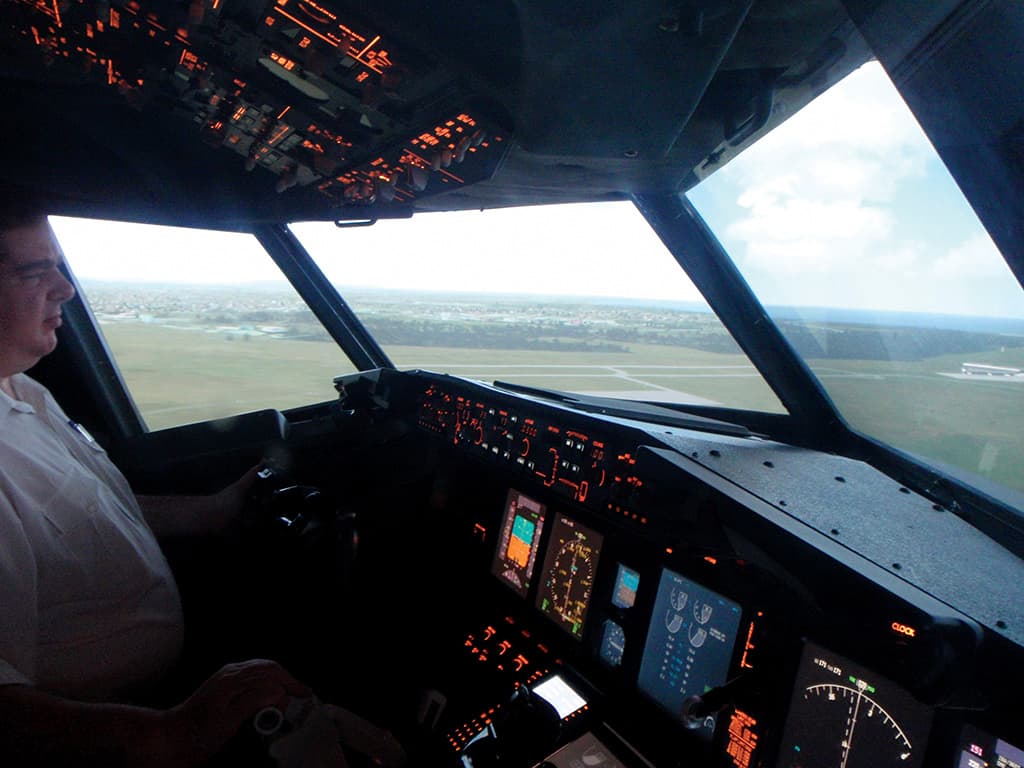
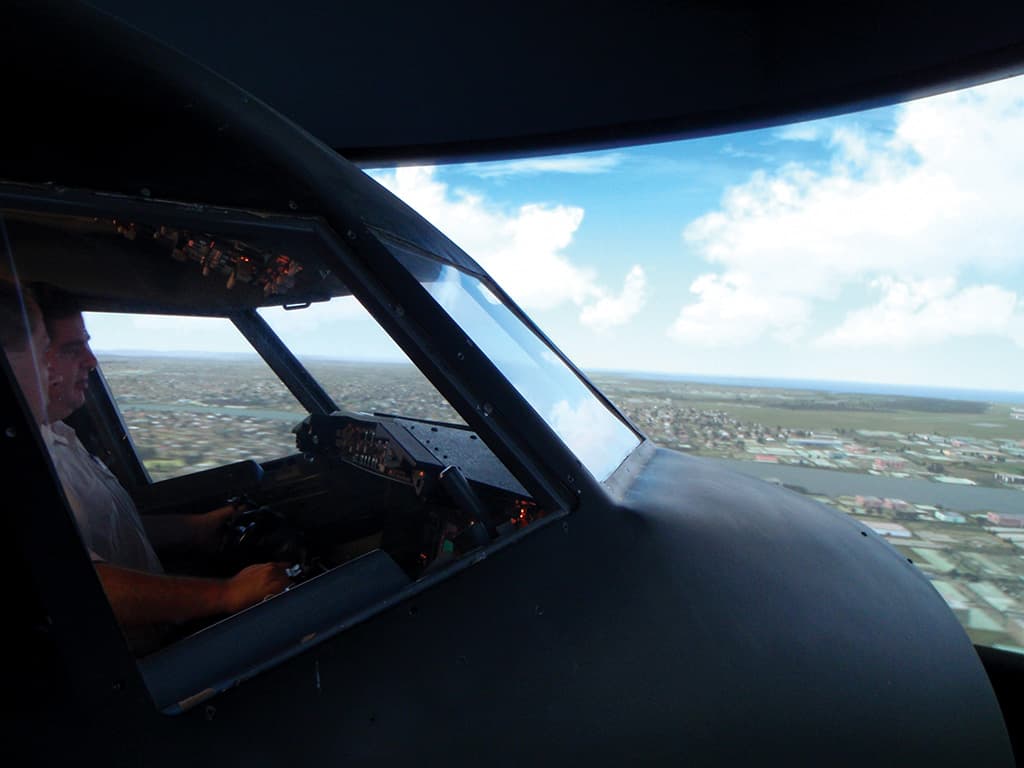
IT FLIES BUT DOESN’T MOVE
This new ‘fixed base’ flight simulator (no hydraulically-operated moving platform is used) provides a low cost aircraft-specific training system for airlines to address training competency levels, and effectively extends the capacity of their existing full-motion simulators.
“The visual system is based around Christie Digital Matrix HD4K with embedded Twist,“ said Paterson. “The Christie Twist allows geometric remapping of the flat plane image onto the cylindrical surface. The 5000ANSI lumen projectors are built for 24/7 operation, with a Xenon lamp based chassis. The custom built PC cluster uses fibre optic DVI-D transport to feed the projectors. The high resolution terrain detail was provided through the Orbx FTX enhancement for Flight Simulator. There is a network tool used also for integration of the cluster using Microsoft’s Flight Simulator X.”
The PC cluster uses Intel Core i7 920 Processors with 6 GB of RAM per machine and Inno3D 1GB NVIDIA GeForce GTX 285 GPU video cards overclocked to gain the speeds required. For storage, the array boasts 64GB Solidata X4 solid state drives. The entire system is run on a Windows 7 x64 Ultimate platform.
“”
It's a blended display system, not individual surfaces butted together
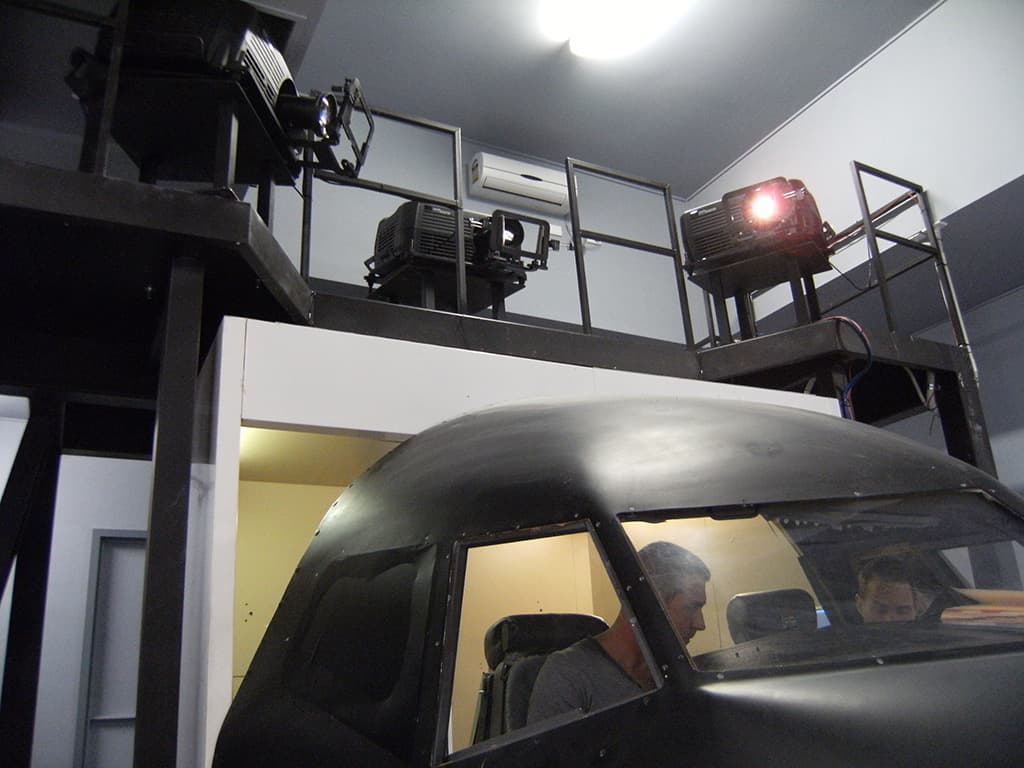
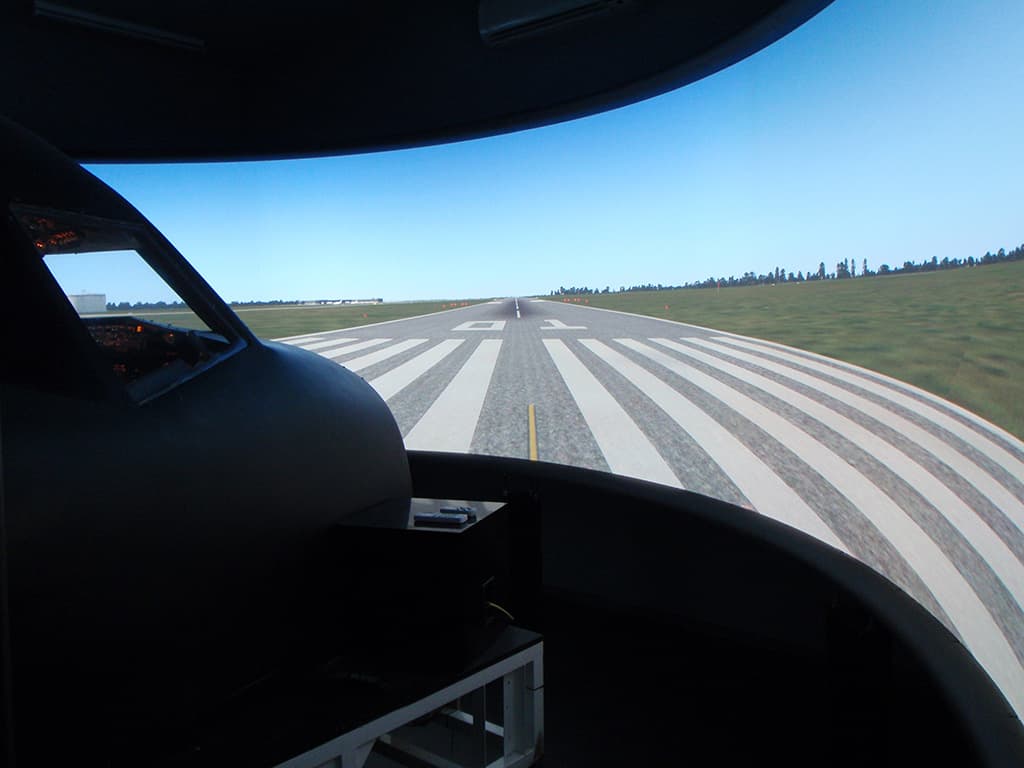
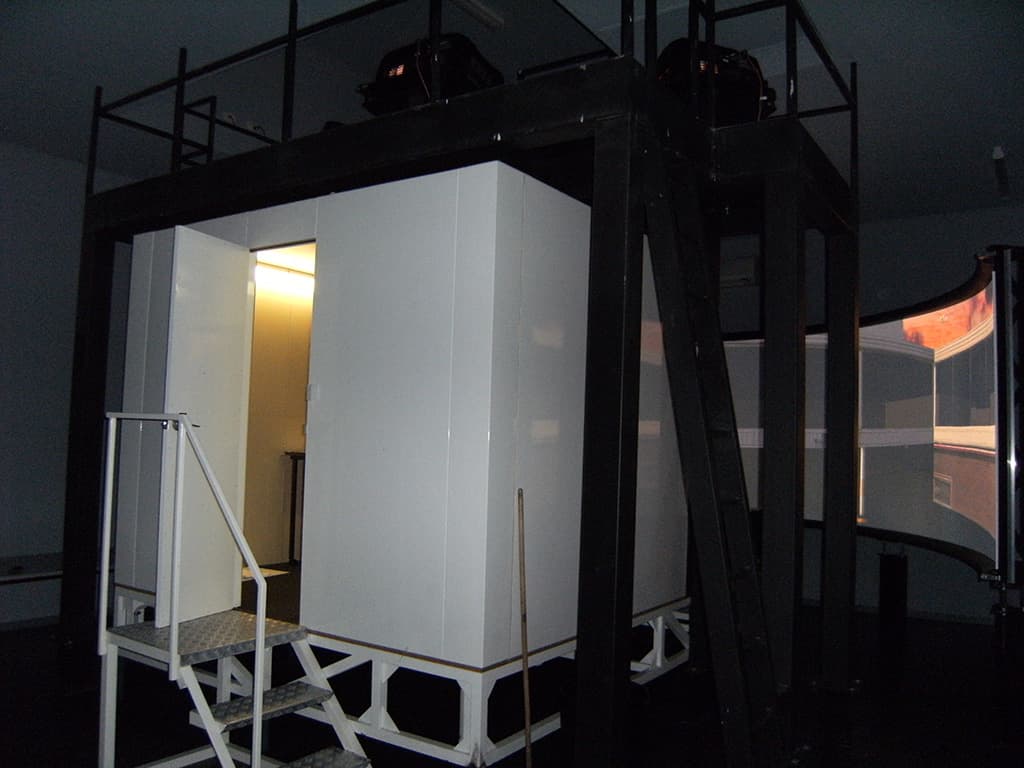
FRAMES IN LOCK STEP
VR Sync, which has been in production since late 2007, was developed to frame lock the PC cluster so that if the pilot banked sharply for example, all of the display channels would remain in sync, and no tearing or delaying of the blended channel occurs. This is generally considered the main ‘achilles heel’ of the using PC clusters. The software was first devised when initial testing of the Microsoft’s ESP simulation engine across multiple blended channels using other software products, displayed a disappointing result, with a far from seamless image. According to VR Solutions, the VRSync software is currently the only available software capable of keeping the video frames close enough together to produce a seamless image.
The overall effectiveness is derived from the combination of all systems to deliver a flight training experience that closely mimics the real thing. With the Orbx terrain, ultra high resolution images and a fully operational cockpit fitted out by the team at Flight Deck Training, the experience is an extremely high quality and very accurate visual result for a mere training environment.
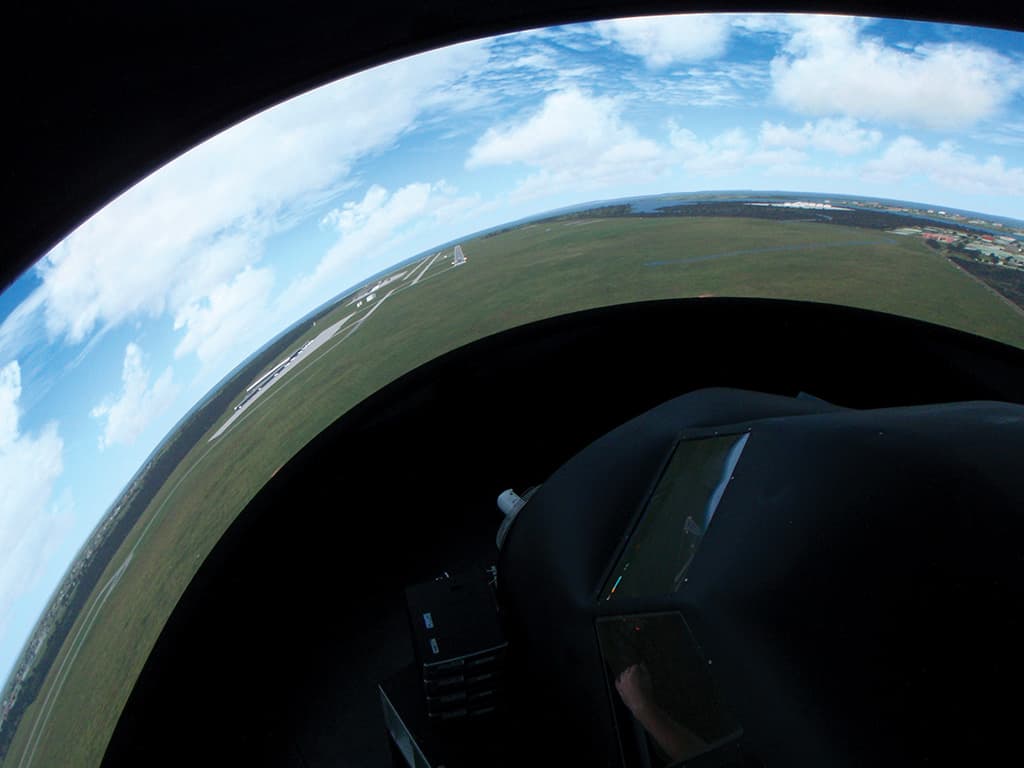
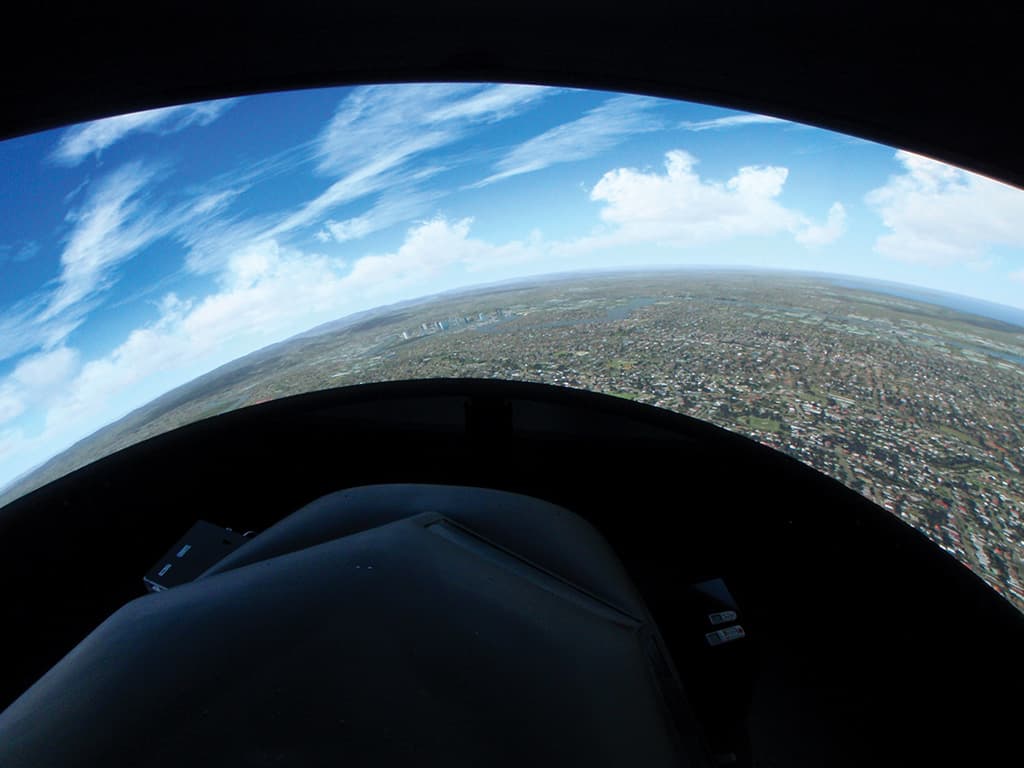
The Gantry itself that hosts the projection rig was built from scratch and this had to be extremely rigid as nothing ruins an immersive experience more than a wobbly image. The screen was custom built for a 190 degree horizontal field of view with a 40 degree vertical field of view.
VR Solutions designed the screen, the gantry and the optical layouts in concert with Christie Digital. The screens are now a product of VR Solutions and can be made to suit most cylindrical applications.
VR Solutions have plans for similar deployments elsewhere in the future. Currently the company is working on a virtual environment project based in India, which will occupy the team for most of 2010, and perhaps beyond.


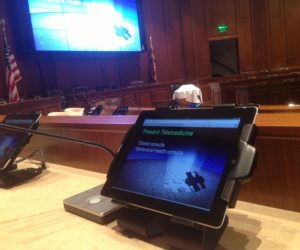
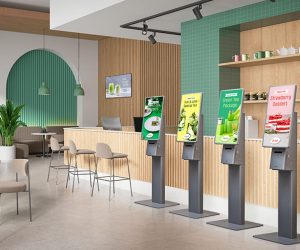


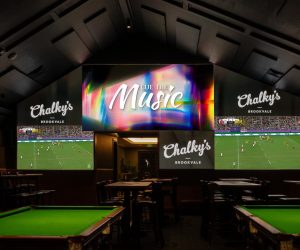

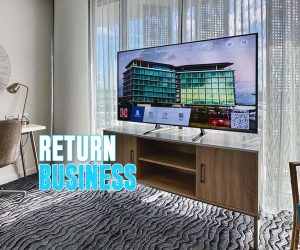

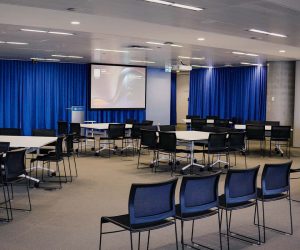

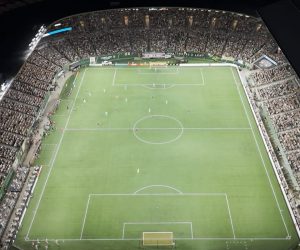


RESPONSES